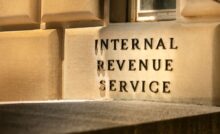Just the Basics: What Lessees Need to Know About the New Leasing Standard


man's hand holding a pen writing a signature, computer in background
In February of 2016, the Financial Accounting Standards Board (FASB) released new standards to help businesses account for their leases. These standards, which were unveiled in Accounting Standards Update No. 2016-02, Leases, Topic 842 (ASU 2016-02), should be followed by any company that adheres to Generally Accepted Accounting Principles (GAAP). Interestingly, these new standards almost exclusively affect lessees; lessors have very little to worry about. The implementation deadline for these new standards is drawing near. Public companies must reflect these new standards on their financial statements for fiscal years beginning after December 15th of this year, and private companies get an additional 12 months to adjust.
Big Picture: What Is Changing and Why?
Under the old accounting standards, companies would only include certain types of leases as a liability and an asset on their balance sheets, while the remaining leases did not appear on the balance sheet at all. Under the new standards, almost all types of leases will need to be reported on the balance sheet as both an asset and a liability. Additionally, companies must release new qualitative and quantitative disclosures in their notes to the financial statements that were not present under previous GAAP.
ASU 2016-02 was an attempt to improve the transparency of organizations that lease equipment. Once these new standards are implemented, investors and other users of the financial statements will have a more accurate picture of the rights and obligations that lessees have in their leasing agreements.
More Detail
The new standards break leases into three distinct categories: finance leases, operating leases, and short-term leases.
Finance leases are long-term leases of business equipment. The lease term is typically for the asset’s entire useful life, at which point the title will often pass to the lessee. Finance leases under the new standard are fundamentally the same as today’s capital leases and will be accounted for in the same manner: by being reported on the balance sheet.
Operating leases are shorter-term leases of equipment that will be upgraded or traded out frequently, like computer equipment. Leasing an office space is another common example. Currently, operating leases only show up on the income statement when a lease payment is made. Going forward, operating leases must also be shown on the balance sheet, as well. A lease will be represented by (1) an asset representing the company’s right to use the equipment for the lease term, and (2) a liability for the present value of the lease payments.
Short-term leases are those that are less than 12 months in duration. ASU 2016-02 allows short-term leases to be accounted for more simply: they only need to be reported on the income statement, similar to how operating leases are accounted for under today’s GAAP. FASB notes, however, that some lease terms that are less than 12 months may need to be reclassified as finance leases or operating leases, regardless of the short term. For example, if there is an implied obligation to renew the contract after 12 months, it cannot be considered a short-term lease.
Once the leases are identified and accounted for correctly, businesses must prepare for the new disclosure requirements. These disclosures are comprehensive and may require more work to draft than management realizes. A few of the more noteworthy ones are listed below:
- A description of each type of lease.
- Identification of subleases.
- Information about upcoming leases.
- The terms and conditions of the lease agreements, especially when reporting variable payments.
- Options to extend or terminate the lease.
- Information about leaseback agreements.
- Bifurcation of the lease payment between lease components and non-lease components, like separating the lease payment from the monthly maintenance fee.
Next Steps
Initially, we recommend that you do an inventory of your leases. Determine which leases are included in the scope of ASU 2016-02 and which are inconsequential. You can also see what types of leases can be grouped together for similar treatment. For example, a company that leases a fleet of vehicles for their C-suite can treat all of those leases in the same manner. As always, it is important to keep records of what judgement calls you make. Separating lease from non-lease components may require more judgment than you initially thought, and you must have a standard for segregating those factors.
To help bring yourself into full compliance, here are a few questions you can ask yourself:
- Do I need to upgrade my accounting software to collect more information about my leases?
- What other judgments have I made when drafting disclosures? Have I made judgments about discount rates or assumptions about how likely it is that I will renew the lease?
- Do I have leases that are embedded in other contracts?
- How will this affect my taxes? If I apportion multi-state income, will my property factor change my state tax estimates?
- Since my debt will increase with this new standard, how will my bank view my updated debt ratio?
Contact Us
ASU 2016-02’s lease accounting standards have the potential to impact more than just management; accounting software may need to change, controls may need tweaking, and comparison reports will look much different going forward. These leasing standards may seem simple enough at first glance, but there are a lot of hurdles to jump over before you can relax and get back into your normal groove. If you would like to discuss how to implement these changes, or if you would like to discuss the new standard in more detail, Wilson Lewis can help! For additional information please contact us directly. We look forward to speaking with you soon.
Recent Posts
Relief on Tap for Georgia Taxpayers
Earlier this month Georgia Governor Brian Kemp signed two important parcels of legislation into law.…
Preparing for an ERISA Audit
Preparing for an ERISA plan audit often starts with understanding what the audit looks for…
Auto Dealership Benchmarking
Atlanta car dealerships are constantly searching for ways to increase new and used car sales.…
Navigating New Auto Tariffs: What Dealerships Need to Know
On April 3, 2025, a new 25% tariff on imported vehicles went into effect, bringing…
Leukemia & Lymphoma Society Fundraiser
I want you to imagine hearing the three words, “You have cancer.” Sadly, this has…
Wilson Lewis Named a Regional Leader by Accounting Today
Atlanta accounting and advisory firm Wilson Lewis was honored this month as one the top…

